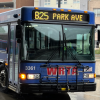The influential nonprofit Boston Foundation issues its Greater Boston Housing Report Card annually; but this year's report , released Wednesday, is in several ways a departure from those of prior years.
Most notably, the report highlights a facet of Massachusetts policy that it suggests is a kind of elephant in the room that deserves to be singled out: Massachusetts' long-standing tradition of local control, or “home rule,” when it comes to zoning matters — and the inequity the report says is being implemented under its protection.
A longstanding facet of Massachusetts law, “home rule” policy gives broad deference to communities when it comes to zoning, allowing communities to dictate what kinds of housing may be built where. This allows communities to effectively ban anything but the kind of stand-alone single-family houses that characterize wealthier suburbs, which, in many cases, only upper-middle-class and upper-class residents can afford.
That deference, asserts TBF President and CEO Paul Grogan in the report’s preface, has resulted in a patchwork of cities and towns surrounding Boston that use zoning laws to block the construction of much-needed multi-family and affordable housing units.
Among the challenges posed by “home rule” practices, writes Grogan, is “the apparent unwillingness on the part of many cities and towns to participate in developing the diversity of housing we need for our region’s growing population.”
The effect of that “unwillingness” to allow the creation of affordable housing, Grogan continues, not only exacerbates rising costs for renters and non-wealthy families, but perpetuates old and systemic injustices.
“Generations of institutionalized racism have entrenched segregation,” Grogan writes, “and – even though the law prevents outright discrimination – established patterns and home rule have only maintained the status quo.”
Read more: The Big Squeeze: Why Does It Cost So Much To Live In Massachusetts?
Alicia Sasser Modestino, a professor of public policy and urban affairs at Northeastern University and one of the report’s authors, said the team found that the inverse was true, as well.
“One of the key features that we found that does drive a reduction in segregation, is adoption of multi-family zoning,” Modestino said.
Meanwhile, Modestino said, communities that have allowed the creation of multi-family and affordable housing have not only been disproportionately shouldering the burden of housing supply but have been under increasing pressure themselves as other communities become increasingly unaffordable for many residents.
The city of Boston, while not without critics over its affordable housing and housing creation policies, is one of those cities that has actively encouraged the creation of multi-family housing.
City of Boston Housing Chief Sheila Dillon told WGBH News that it’s time other communities to step up, as Boston has done.
“Forty-three percent of the new multi-family housing that's been permitted in the commonwealth has been permitted in Boston — this is a regional problem,” said Dillon. “We absolutely need surrounding cities and towns to build more multi-family housing at a variety of income levels.”
The report stops short of prescriptive policy recommendations, but instead recommends change in broader terms, pointing to examples of municipalities that have revised their zoning codes to allow, among other things, the “by right” construction of multi-family housing, meaning such housing wouldn’t require zoning variances or the overcoming of other legal hurdles.
Among the report’s findings:
- Rent Burden: The percentage of income paid toward rent by renters has increased in recent years — not just in places like Boston, Cambridge and Somerville, but widely throughout the five counties that make up the Greater Boston region.
- Segregation: Despite an increasingly diverse population overall, racial segregation persists across Greater Boston, with 70% of Latino households and 66% of black households residing in only 10 municipalities. The report finds that communities that permitted more multi-family homes were less segregated and that communities that prevent such housing are more segregated.
- Homelessness is on the rise in greater Boston, even as it’s down in the city of Boston itself.




